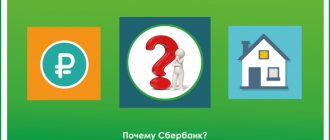Where can I get the housing and communal services identifier in the housing and communal services GIS, which is needed to use the unified information system?
To make a payment through GIS you need several keys:
- housing and communal services identifier;
- personal account;
- payment document identifier.
GIS was developed for the convenience of Russians. With this system, paying utility bills has become much easier. There is no need to crowd around cash desks, knock on the doorsteps of resource providers, or make tedious calls. All you need is a device with Internet access and a payment card.
In the GIS, citizens have access to information about the current state of affairs, input of current metering indicators with the ability to immediately pay the bill, tariffs, standards, addresses of structures that control the activities of management companies, sample contracts and other information.
PD ID
This is the full payer code to be entered into the GIS. Consists of 18 characters:
- 1-10 – personal account;
- 11-13 – name of the service;
- 14-18 – payment ID.
Based on the first 10 characters, the system recognizes that we are talking about a utility payment, and also understands what specific dwelling we are talking about and who its owner is. Getting a personal account is very simple - it is created automatically by generating symbols in the following cases:
- emergence of a new owner;
- the emergence of new residential premises.
For example, if the owner of a residential property has changed or a co-owner has appeared who must pay his part of the payments, another personal account is required. If a person who has a personal account for one property has a new home, he must receive a new personal account, because the new property will not be identified from the previous account.
So, based on the first 10 characters, the GIS determines that the payment is being made for utilities, and what kind of real estate they plan to pay for.
11-13 characters – the name of the specific service. In this case, the 11th character is separating and has no practical load. Using 12-13 characters of the code, the program determines what exactly the payment is being made for - for water supply, hot water, heating, garbage removal, etc.
The code ends with information about the payment document.
- 14 – a symbol without meaning, it serves as a separator between the first two and third parts of the identifier;
- 15 – the last digit of the year of payment (for example, 8 for 2018);
- 16-17 – month of payment (for example, 11 – November);
- 18 – payment document number (usually there is a number 1 here, because there is often only one payment document for each apartment).
Question: where can I get the identifier of the GIS Housing and Public Utilities payment document?
Answer: the program generates part of it independently - the first 10 characters are unchanged, they are generated in random order every time a new payer (new home owner) is entered into the database. The following symbols indicate the specific service and the period for which payment is made. These symbols are contributed by the utility company.
Important! The utility coding does not have a common pattern. Each utility company sets its own values. The relevant information is entered into the database, so the program will decrypt everything correctly.
What is it and how to get it
A settlement document for housing and communal services is a special receipt that shows the amounts payable for the provision of certain services by resource providers and the management company.
The document contains the following information:
- information about the owner of the home in whose name the invoice is issued;
- details where funds should be transferred;
- list of services and values of accrued amounts for them for the specified billing period.
This document is provided mainly by mail, but it is also possible to receive an electronic version of the receipt by e-mail.
The main thing to remember is that the absence of a payment document does not relieve you from the obligation to make payment. The obligation to pay utility bills rests not only with the owner, but also with all able-bodied and adult users of the premises
. These include citizens registered in housing, foreign nationals, as well as legal entities owning or renting real estate.
The procedure for payments for housing and communal services is regulated by the Housing Code. According to Article 155, service consumers must make payments for the past month before the 10th day of the next month
. What items are included in utility bills and how their size is determined are described in Articles 156 and 157. Based on them, one can conclude whether the amounts for each item on the receipt were legally accrued.
Article 156. Amount of payment for residential premises
Article 157. Amount of payment for utility services
Sample payment order
Preparation of payment
The utility company prepares the payment. It takes the personal account number from the database and is not able to change it. The following symbols are entered by them based on the data known to them - how much, for what and for what period the consumer of the service owes.
If the receipt that a citizen receives from the supplier contains an identifier, the service consumer has the opportunity to open the GIS website and make payment.
Other options are available to pay for utilities using the ULS:
- Sberbank website and ATMs for clients of this bank;
- local specialized resources;
- service provider resources;
- cash registers.
Reservations regarding penalties
A separate payment order is provided for penalties. It can be used by those who are behind on one or more payments for housing and communal services.
. This type of payment has its own characteristics.
In general, a receipt for a penalty is in many ways similar to a regular payment order (the same basic data is indicated: information about the contractor, payer, etc.), but there are three main differences.
The first distinguishing feature is related to the budget classification identifier (field 104). According to the KBK, it is precisely possible to determine that the payment relates to penalties.
The second difference is in the 106th field “Basis of payment”. It will most likely indicate the abbreviation “TR” (“on demand”) or “AP” (“payment upon inspection report”).
The third feature is related to filling out field 107, which indicates the tax period. In the case of voluntary payment of penalties or when paying in accordance with the verification report, it is usually indicated by 0, since penalties are often not tied to any period
. But if they are listed for any one specific month, then the corresponding numerical designation is indicated.
Do not forget that the payment of penalties is rather not a punishment, but an interim measure, since thanks to them, timely payment of bills is achieved.
Utility payments in apartments are calculated at the usual rate, only property tax is added.
Read here how to pay utilities through the terminal.
We will tell you further where payments for utility services are accepted.
Subsidy
If more than 22% of the family budget is spent on utility bills, the household has the right to request a subsidy. If the request is approved, the total amount of payments will be limited to one-fifth of the family's income. Subsidies are assigned by local social welfare authorities.
When loading payment document identifiers from the GIS Housing and Communal Services, the required fields “Period” and “Receipt Type” may not be filled in.
Let's look at why this could happen.
To download payment document identifiers assigned on the GIS Housing and Communal Services website, you must go to the “Data Exchange with GIS Housing and Communal Services” form, select the exchange type “Payment Documents” and go to the “Loading Identifiers” tab:
Identifiers of payment documents are recorded on the GIS Housing and Public Utilities website after successful uploading of the “Information about payment documents” file in your personal account. They are stored in the file “Information about payment documents... Result”. You can download this file in your personal account of GIS Housing and Public Utilities – Result of file import/export:
You need to find the desired file and click on the down arrow and select “Save processed file”:
Open the saved document:
The processing status should indicate “OK”; an identifier will be assigned in the “Payment document ID” field.
We load this identifier into the program.
In the open window “Data exchange with GIS Housing and Communal Services” we indicate the Search directory - the folder where this file is located:
Note:
you cannot select the file itself; you just need to specify the folder where the file is located.
After specifying the folder we need, click on “Perform search”:
The tabular part will be filled with data from the file:
This message indicates that the “Period” and “Receipt Type” fields are not filled in - these fields are required.
This message appears if the information on the period and type of receipt for the personal account is not entered into the Information Register “Payment documents uploaded to the Housing and Public Utilities Information System”.
Let's go into this register and check the data.
To do this, go to the “All functions” menu (more details about this menu are described in the instructions):
We find the information register “Payment documents uploaded to the GIS Housing and Public Utilities”:
We open it and make a selection according to the personal account. In this case, this is the personal account “l/s No. 2011067057”:
No data on this personal account was found in the register.
In order for the data to be displayed here, you need to re-upload information about payment documents on your personal account for the required period (in our case, January 2018).
Note:
You just need to upload the file; you don’t need to upload it again to the GIS Housing and Communal Services
After uploading, let’s check whether the data appears in the Register:
The data has appeared.
Now let's go back to loading identifiers and perform the search again:
We see that all columns are filled. You can save identifiers:
This identifier is also recorded in the information register “Payment documents uploaded to the GIS Housing and Public Utilities”:
Various methods are used to pay for housing and communal services, and one of the main methods is the use of the GIS housing and communal services system. But to pay, each consumer must know a special code, which is called the payment document identifier. Below we will learn about what GIS housing and communal services identifiers are and what blocks the PD identifier consists of.
How to find out the payment document number for housing and communal services
How to print a housing and communal services receipt for paying for an apartment
Save your time and nerves. Click here and get a free consultation with a professional lawyer within 5 minutes. Possibility of printing a document Innovative services This also means that a receipt for the apartment rent can be sent to the owner of the apartment: If the apartment is equipped with a meter, then the charge for cold water supply is made according to the readings of the device.
How to find out the housing and communal services account number at the address?
But what to do if for some reason there is no receipt, if it is lost? Another option is to contact your housing office (in person or by phone).
The operator, having specified your address (in extreme cases, you will have to present your passport), will dictate your number.
Typically, many people do not throw out receipts for utility bills, but keep them so that when paying for services for the next month, they can compare their debt for this and the previous month/previous months.
How to receive and pay for the Unified Payment Document on the City Services Portal
For the convenience of receiving and paying for the EDP, it is recommended to fill out the Unified Personal Account in advance (see the section “Unified Personal Account for access to government services and services of the city of Moscow”).
To receive an EPD after registration, you must select the “Apartment, Housing and Utilities” section.
How to find out the housing and communal services payer code by address if there is no receipt
Yes, you can. In order to receive a monthly extract from the ESPD on your mobile phone, you need to send a message with the text: EEPD P “payer code” to the short number of the city SMS center 7377.
Housing and communal services can be paid using a credit card from your personal profile on the city services portal.
9. Volumes of consumption of housing and communal services.
Each service uses its own units of measurement: water supply and sanitation - cubic meters.
(cubic meter); maintenance and repair, social rent of housing - sq.
We recommend reading: Okay return of goods
GKU coordination center GU IS
Payer number
Public utilities
Computer literacy with Nadezhda
I can make a payment with or without insurance, and both amounts offered to me by the system coincide with those indicated on the receipt. This means that the databases of Sberbank and my EIRC are already synchronized! I refuse insurance and click “Continue” again.
What to do if there are no rent payments
If due to untimely delivery of the payment to the addressee there is a delay, the owner of the premises must independently take care of proving what happened due to the fault of the utility workers.
What to do if there are no payments for rent There is no need to be upset if the receipt for payment for housing and communal services was lost/stolen/not delivered.
After all, in most cases this problem can be solved quite quickly.
How to find out the housing and communal services payer code at the address: features and step-by-step description
The payer code is the same identification number as the TIN, SNILS code, policy, passport, etc. It allows you to identify all payers.
Method No. 1: by receipt The surest way to tell you how to find out the payer code is to look at the receipt for payment for housing and communal services.
Source: https://myeconomist.ru/kak-uznat-nomer-platezhnogo-dokumenta-za-zhkh-19287/
What's happened
The full payment document identifier (PD) is a special alphanumeric code that consists of 18 characters. This GIS account is entered into the document by the housing and communal services company so that the end consumer can pay for utilities using this GIS account. This code is useful both for paying utility bills at the bank and for paying online. The housing and communal services identifier in the Housing and Communal Services GIS contains information about the residential premises, the consumer, and so on. The code consists of 18 characters; The account itself can be divided into three main blocks:
- Single personal account (USA). This block contains information about the premises and the person who is the end consumer. Number of characters - 10 pieces. This account is assigned not by the management that provides the services, but by the GIS site itself.
- Housing and communal services code. This block contains information about a specific service (water supply, electricity supply, gas supply, cleaning the area around the house, and so on). Number of characters - 3 pieces.
- Payment document identifier. This block contains information about the payment order, according to which the consumer will pay for utilities. Number of characters - 5 pieces.
Below we will look at GIS housing and communal services identifiers in more detail.
Single personal account
A single personal account (UPA) is a code that contains information about the premises and about the consumer who must pay fees for the provision of housing and communal services. A single personal account consists of 10 characters: the third and fourth characters are letters, and all other characters are numbers.
Important! This code is needed so that the operator of the housing and communal enterprise understands that this payment relates to the GIS housing and communal services. Also, using this code, the enterprise operator identifies the residential premises and the owner of this premises, on whose behalf payments are made.
A single personal account is created automatically by the GIS housing and communal services system using the random number generation method. A new ELS is created in the following cases:
- Adding a new personal account.
- The appearance in the GIS housing and communal services system of a new residential premises owned by a person.
- The appearance of a person who will act as the owner of the residential premises. If the owners of the premises are several people, then new ULS will be created for each owner.
Service ID
The housing and communal services identifier in the Housing and Communal Services GIS is a special code. It contains information about the dwelling and the consumer, as well as information about the type of utility service. The housing and communal services identifier consists of 13 characters, which have the following meaning:
- The first 10 characters represent the ELS, which is generated when registering a home, adding an account, or adding a new consumer.
- 11, 12 and 13 characters are a special code that contains information about the utility services that the utility company provides to the consumer. The 11th character is a special delimiter character that separates the ELS from the utility identifier.
Payment document ID
The GIS account of a payment document is a special code that contains information about the residential premises, consumer and type of utility service, as well as information about the payment document. The GIS account of a payment order consists of 18 characters, which have the following meaning:
- The first 13 characters represent the identifier (which in turn consists of the ELS number and a special code that identifies the utility service).
- The 14th character is a special separator character that separates the service identifier from the payment document account.
- The 15th digit is the last digit of the year.
- The 16th and 17th characters are the serial number of the month.
- The 18th character is the number of the payment document (usually the consumer receives only one payment per month, so most often the 18th character has the value 1).
Table
The table provides a breakdown of all the symbols that are included in the GIS payment order account:
| Serial number | Format | Meaning | Housing and communal services identifier type | What do GIS housing and communal services identifiers mean? |
| 1 | Number | A unique code that is assigned to each consumer (characters are generated randomly) | Single personal account (USA) | Information about the room and person |
| 2 | Number | |||
| 3 | Letter | |||
| 4 | Letter | |||
| 5 | Number | |||
| 6 | Number | |||
| 7 | Number | |||
| 8 | Number | |||
| 9 | Number | |||
| 10 | Number | |||
| 11 | Sign "-" | Service code in GIS Housing and Communal Services | Information about a specific utility service | |
| 12 | Number | Number of works and/or services for which the consumer must pay | ||
| 13 | Number | |||
| 14 | Sign "-" | Used as a separator | Payment document ID | Document details |
| 15 | Number | Last digit of the year | ||
| 16 | Number | Month number | ||
| 17 | Number | Month number | ||
| 18 | Number | Serial number of payment document per month |
Example of a payment document identifier for GIS Housing and Communal Services
Now let's try to decipher the account ourselves. If you have received a notification indicating GIS account 84ba642319-02-8011. Such GIS housing and communal services identifiers are deciphered:
- 84ba642319 is ESL. This value is randomly generated once each time a new account, owner, or property is added.
- 02 is the service number. Numbering is carried out by utilities, so this symbol does not have a single interpretation; in one case, this code will mean hot water supply, and in another case, gas supply, and so on.
- 9011 is information about the document. Symbol 8 is 2019
- year, 01 is January, 1 is the document number.
What we get as a result: 84ba642319-02-9011 - this is the first payment document for January 2020 for service number 02, which was provided to consumer number 84ba642319.
How to fill out a receipt in Sberbank
Order of the Ministry of Finance of Russia dated September 23, 2015 N 148n allows you to use the details of any document that belongs to a citizen as an identifier. It could be:
- SNILS number
- Series and passport number
- Driver's license series and number
- Birth certificate details
- Resident card
- TIN
- Details of other documents
Before the identifier, you must indicate its type. For example, for a general passport it is “01”, for SNILS – “14”, etc.
Below is a table of codes for each document.
| Code | Document |
| 01 | Passport of a citizen of the Russian Federation |
| 02 | Birth certificate issued by the civil registry office |
| 03 | Seaman's passport |
| 04 | Military ID |
| 05 | Military ID |
| 06 | Temporary citizen identity card |
| 07 | Certificate of release of a citizen from prison |
| 08 | Passport of a citizen of another country |
| 09 | Resident card |
| 10 | Temporary residence permit |
| 11 | Refugee ID |
| 12 | Migration card |
| 13 | USSR passport |
| 14 | Insurance pension certificate (SNILS) |
| 22 | Driver's license |
| 24 | PTS (certificate of vehicle registration with the Ministry of Internal Affairs of the Russian Federation) |
If payment documents are filled out correctly, there should be no problems when making a payment.
The algorithm for filling out the IPGU section in a payment order is as follows:
- Specify the document code corresponding to its type
- Enter the separator ";"
- Write the number of the identity document
For example, for a Russian Federation passport, the IPGU will look like this: 01;1111223344, where the numbers after the semicolon are the series and number of the passport without spaces.
As an identifier of a legal entity, together with IPGU, the Sberbank receipt uses the taxpayer identification number (TIN) along with the reason code for registering with the tax office (KPP) of the legal entity. These two details are required for payment of a receipt to the organization.
Most often, I use IPGU to pay for the services of budgetary organizations, such as:
- Kindergartens
- Schools
- Other educational institutions
- Public hospitals and clinics
- Local branches of budgetary organizations
- Municipal authorities
According to reviews from citizens who use an identifier such as IPGU when paying, with the innovation it has become more convenient to pay for receipts; there is no longer a need to register additional data - place of residence and other details.
Where can I get a payment document identifier?
The full GIS account is entered into the document by the operator of the housing and communal services company, which has the appropriate authority. The operator takes a single personal account from the state database of the GIS Housing and Communal Services, and the operator cannot change this code at will. The number and information about the means of payment are indicated by the operator independently when drawing up a payment notification.
Important! After receiving the document, the consumer of housing and communal services must make a payment. If for some reason the payment document does not indicate a GIS account (operator error, torn receipt, etc.), then the consumer must contact the housing and communal services company to get a new GIS payment account.
Compliance
The requirements for indicating mandatory information in a payment document for utility services are established by Resolution N354 of 05/06/11, which introduced the Rules for the provision of housing and communal services.
According to clause 69 of these Rules, the receipt must contain the following information:
- the address of the residential property, information about its owner, and for housing located on social rent - the full name of the tenant;
- the name of the organization that issued the invoice, as well as all its details, including bank details;
- payment period, name of each service, tariffs for them, applied units of measurement;
- the volume of services provided and the amount of payment for each of them;
- the volume of each type of housing and communal services used for common house needs, and the readings of common house meters;
- information about the recalculation that took place, listing the grounds for additional charges or reductions in the amount of payment, including due to: provision of housing and communal services of inadequate quality or with interruptions exceeding established standards;
- residence in housing of temporarily registered persons;
- temporary absence of residents (if meters are not installed);
- payment of penalties in favor of the consumer;
According to Art. 70 amounts for services provided to the consumer and payments for housing and communal services for general house needs must be indicated on separate lines.
In accordance with Art. 71 sample payment orders for utility bills are approved by the Ministry of Construction and Housing and Communal Services.
If the information in the settlement document is presented improperly, it is necessary to send the corresponding claim (the appeal is submitted in two copies) to the management company. It must indicate the requirement to provide complete and/or reliable information regarding items that were not provided in accordance with the standards.
Why do you need a single personal account?
The 10-digit code stores information about the owner of the premises, the services he receives and data about the apartment or house. It can be identified by the presence of letters in the code - the third and fourth characters. Everything else is numbers.
A personal account is created by the Housing and Public Utilities Information System when registering a new subscriber using a random number generator. It will be assigned to the owners of new premises or if the apartment has one or more owners.
If you use a single personal account when paying for housing and communal services, the system will know that you are paying through the Housing and Communal Services GIS.
It consists of two parts: the first, open, to which all individuals who, after completing the registration procedure on the resource, have access. This part allows the user to find out information about his own residential building, its management company, and also to pay the citizen’s utility bills using his personal account.
The second part of the information can be seen and changed within their competence only by those individuals who have been identified and authenticated in the Unified Identification and Automation System, as well as organizations (management companies, homeowners' associations) and representatives of government bodies or extra-budgetary public funds.
It would be logical to assume that since a citizen using GIS has the opportunity to pay utility bills directly in the system, then operators who accept payments also have access to it.
This is true - operators who accept payments for utility services have access to the GIS housing and communal services
.
As a general rule, the system operator places in the GIS a list of functions available to users. In the future, everything depends on whether the information on the basis of which the operator was issued his authority is available in the appropriate register.
If it is present, all functionality becomes available to citizen users immediately. If there is no such information in the registry, the functions will be blocked. Only after the necessary data has been entered into the registry will the operator have the appropriate powers
.
In order for the payment acceptance operator or payment agent to receive authority in the GIS, they must not only wait for the data to arrive in the system registers, but also upload electronic copies of agreements and other required data into it to confirm authority.
Attention!
powers received in the State Information System of Housing and Communal Services are limited in time, and, as a rule, terminate after the expiration of the period for which they were issued.
But they may be lost earlier for the following reasons:
:
- review;
- the one who received the powers will refuse them;
- the authority of the user on whose behalf the actions were performed will expire;
- the basis for such powers to operate will be absent or cease to exist;
- it will be discovered that the user used information that did not correspond to reality when applying for authorization.
Payment details in the 2020 payment order
The third important block is payment information. This indicates the amount of the payment, for what purposes it is being made, and what the payment is for.
.
Table 3
| No. Fields | Name | Decoding |
| 5 | Payment type | This field is filled in according to the rules established by the sender's bank. When generating an electronic payment, indicate the code set by the bank . If there are no requirements, then leave the field blank. |
| 6 | Suma in cuirsive | Explanation of the amount in words. Kopecks are indicated by numbers; if there are no kopecks, then 00 is entered . For example: “One thousand five hundred rubles 00 kopecks.” |
| 7 | Sum | Here you need to indicate the amount in numbers. Kopecks are written through the sign “=” or “-” . For example: "1500 = 00". |
| 18 | Type of operation | The transaction code is indicated here in accordance with accounting rules. For a payment order - “01” . There are other codes for other types of transactions. |
| 21 | Outline of boards | In accordance with Article 855 of the Civil Code, there is a sequence of payments. The priority depends on the sufficient availability of money in the current account . If there is not enough money, then priority is applied. First of all, funds are written off under executive documents - alimony and compensation for harm to health, secondly - remuneration for labor obligations, third for wages and tax payments, fourth - for other executive documents and fifth - other payments as they are received. . |
| 22 | Code | Unique payment identifier. It is affixed if it was assigned by the sender. If it is not there, then “0” is entered in the field. |
| 24 | Purpose of payment | This field is required. It indicates on what basis the payment is made (date and number of the invoice, agreement or other basis), indicates the name of the product or service for which payment is made . The payment is also noted with VAT or without VAT and its amount in numbers if the payment includes VAT. |
What does the 18-digit code contain?
At the very beginning of working with the system, many new terms appear, and the phrase “payment document identifier” can easily be attributed to them. What should be understood by this concept, and what components does it consist of?
This is information about the payment receipt, transmitted to the GIS in a specially encoded form and containing information about
:
- Identifier of housing and communal services.
- The payment document itself.
The external expression of the identifier itself consists of eighteen elements, each of which has its own numeric or alphabetic expression.
The first thirteen digits fully correspond to the identifier of the housing and communal services, the fourteenth is a hyphen, numbers from fifteen to eighteen are the document number in the ULS in the following order: the last digit of the year in which the document was issued, the month (the designation occupies two digits at once) and the document number this month.
How to check
Cases of PP fraud are not very common, but they do occur. To exclude outside interference, it is recommended to prepare documents through the Client-Bank electronic system.
If a paper version is used, then scammers can create very high-quality fakes that are almost impossible to distinguish from the original. It is best not to trust strangers who present a payment, but to wait for the funds to arrive in your account. Nowadays, the bank’s processing time for a PP transfer often does not exceed one hour, so it is recommended to play it safe. In any other cases, acceptance of PP is carried out at the risk of the recipient of funds.
A PP is a document that obliges the bank, on behalf of the payer, to transfer a certain amount of money to the recipient’s account. There are two types of these documents, as well as paper and electronic forms of formation. Mistakes are not allowed, so you should know the rules for filling out and formatting the paper. A paper copy is difficult to protect from counterfeiting, so caution must be exercised. It is better not to trust unfamiliar bearers and wait for the amount to arrive in your account.
How to find out the contract number under which you need to pay utility bills
The situations may be different, but no matter what happens, no one will relieve you of the obligation to pay utility bills. Rent arrears have a lot of unpleasant consequences for owners.
Read the article on how to find out your housing and communal services debt and the consequences of failure to pay utility bills.
How to find out rent arrears? You can find out about rent arrears by contacting one of the organizations that transfer payments for housing and communal services. Calculations can be made via:
- public services;
- banking organizations;
- management company.
According to Art. 155 of the Housing Code of the Russian Federation, these organizations are required to notify owners of the amount of debt incurred.
Is it possible to find out the housing and communal services account number by address?
Payment of housing and communal services using a personal account Knowing the personal account, residents can pay utility bills in the simplest and most convenient way, literally without leaving their place.
To do this, you need to have a bank account or e-wallet. If you have one of the above tools, residents can pay their bills directly with them without fees.
The procedure is as follows:
- You need to go to the section of the corresponding bank portal or electronic wallet for paying debts, including utility bills.
- You must enter your personal account for housing and communal services to check the balance, as well as to certify the amount required for payment. As a rule, a bank’s online banking portal or e-wallet website remembers the personal account after the first payment made.
How to find out the personal account of an apartment by address
Attention: In order to pay rent, the personal invoice must contain the following information:
- A separate living space in a house, as well as its characteristics: size, quality condition, and so on. In general, it is necessary to include here all those indicators that can in any way affect the state of the utility account.
- Information about the services that are provided to the relevant premises, as well as all types of such services for which the residents of the corresponding apartment are charged.
- A list of people who officially reside in the relevant dwelling, with the exception of those registered there on a temporary basis.
To open such an account when paying, you must contact your local passport office. As a rule, the owner of the home or the responsible tenant applies.
How to find out the housing and communal services account by address?
Important Ways to find out the housing and communal services personal account number at the address If receipts are inaccessible, lost, or for some reason there is no personal account on them, then you can find it out in several ways. 1. Through the State Services website (for Muscovites) For example, residents of Moscow have access to the State Information System website created by the city’s fuel and energy department. You can find out the housing and communal services account number by address and check the debt for it after entering the address in the search line. 2. Phone call to housing and communal services/management companies After receiving a personal account, it can be paid at a bank that accepts utility payments. Another way is to find out the personal account number when calling the housing and communal services or management company (MC). The operator will name the account and the amount of debt after reporting the address of the apartment. 3. Sberbank (ATMs) Sberbank clients can find out their personal account number on the Sberbank Online website.
Payment of utilities via personal account
The personal account number and the amount of debt will appear on the display and after payment you can receive a receipt;
- specialized sites that exist in almost every region. On the portals, at the entered address, you can find out information about the object, including the amount of debt. The address of Internet sites is always printed on payment receipts, which indicate the rules and procedure for providing information.
How to find out the debt for an apartment Timely and comprehensive information is required to be provided by service organizations with which the residents of the building have a collective agreement.
Employees of the management company are required to decipher accrued payments and explain to the tenant the accrual rules, existing tariffs and correction factors.
It is important that the management organization has its own website.
How to find out the personal account at the apartment address?
To do this, he must contact the passport office, EIRTs or all resource supply organizations with a passport, a purchase and sale agreement and a certificate of ownership.
How to find out the personal account number of an apartment at the address of the house It’s easy to find out the personal account of the utility payer - it is indicated in the receipt for payment of housing and communal services.
Opposite the “Financial-personal account” item there are numbers printed that correspond to its number.
If the owner does not have a receipt, but you need to find out your personal account to pay for utilities, you can do this at the apartment address in several ways:
- On the government services portal. Through the website, by entering your address, you can find out your personal account number and your existing debt.
- On specialized websites available in almost every region.
Where and how to get an extract from the tenant’s personal account
Sometimes a personal account for one piece of real estate belongs to several owners and is divided into several accounts, which is also reflected in the settlement center.
To regularly check the status of the account and the correctness of the payment, you should link the personal account to the apartment if only the address of the living space the person is interested in is known.
The need to use a personal account Technical information about the object stored in the settlement center represents a complete description of the apartment.
This includes the number of rooms, the presence of a balcony or loggia, residential and general footage, features of the bathroom, floor and the presence of an elevator. Detailed information is needed to determine the utility payment and its proper justification. The information concerns the number of registered citizens and the legal status of the apartment.







